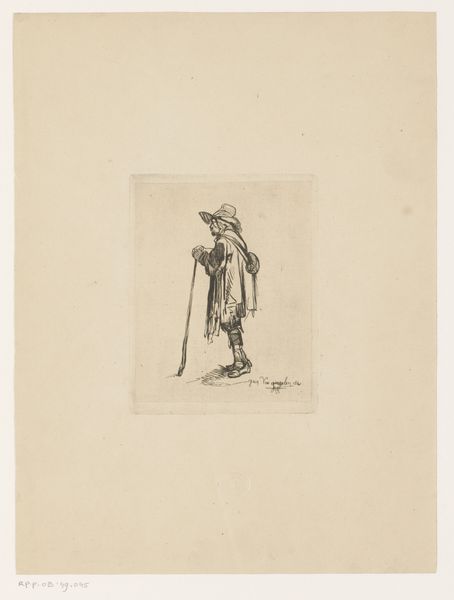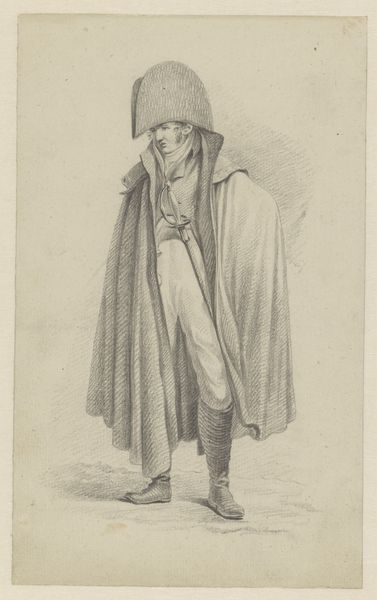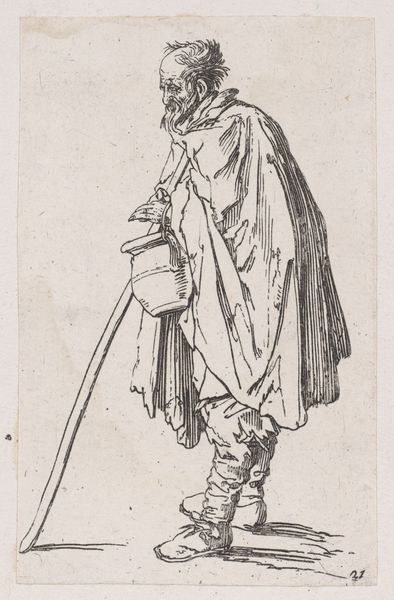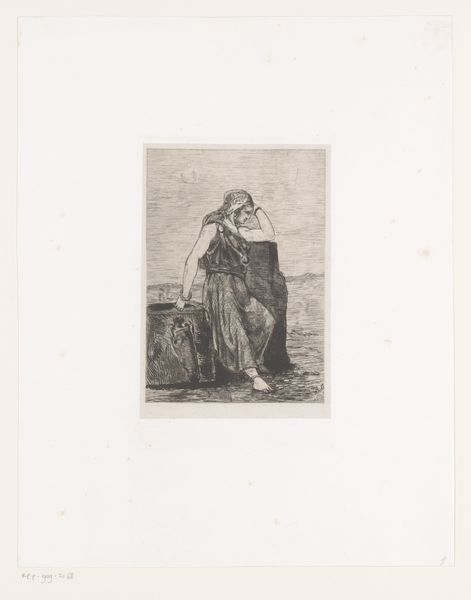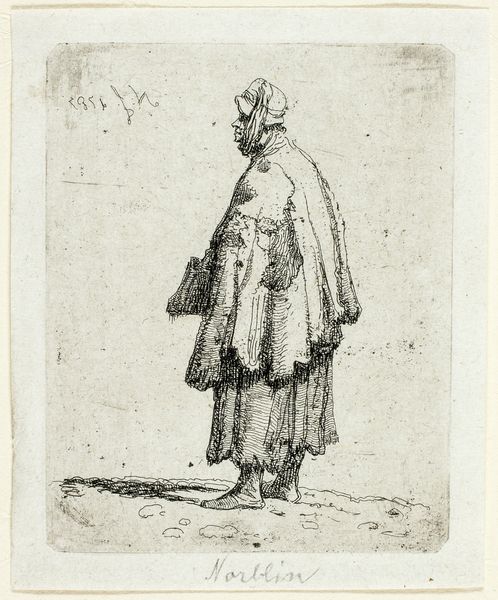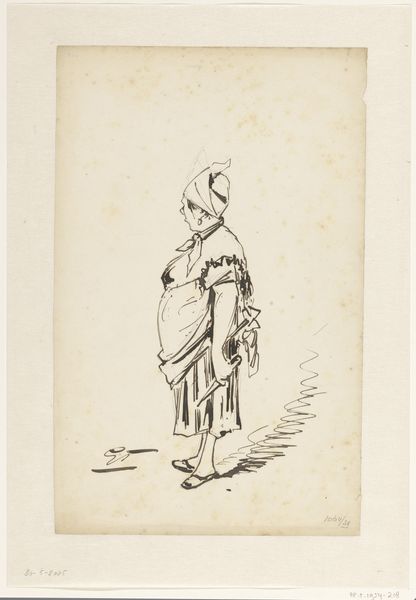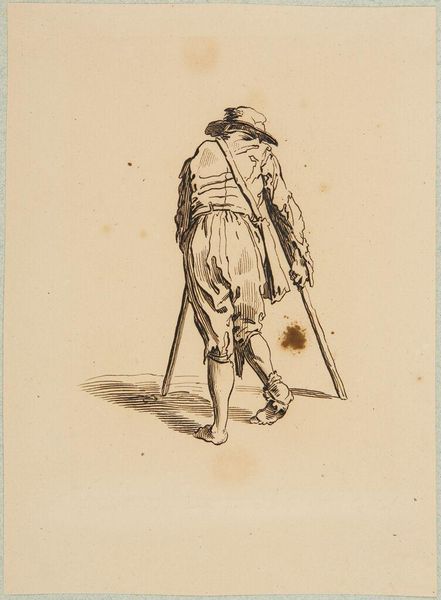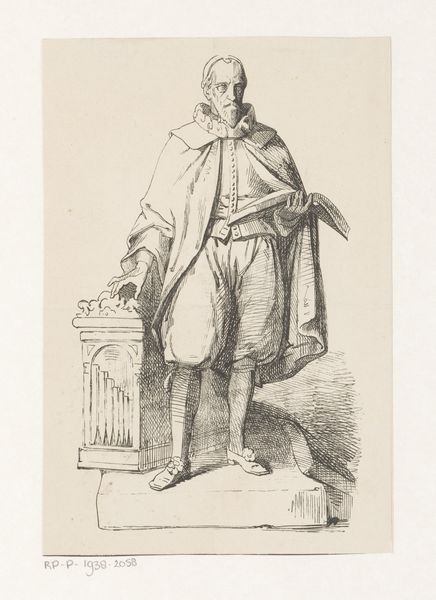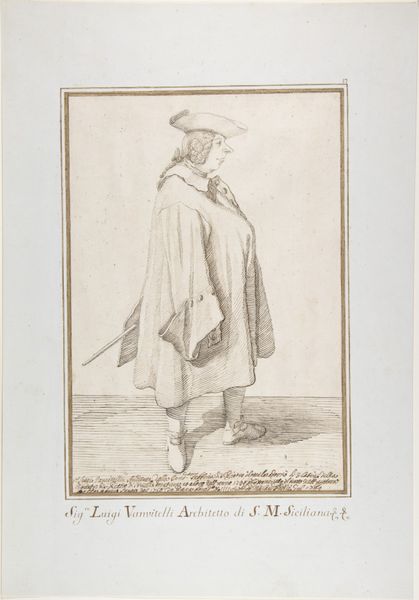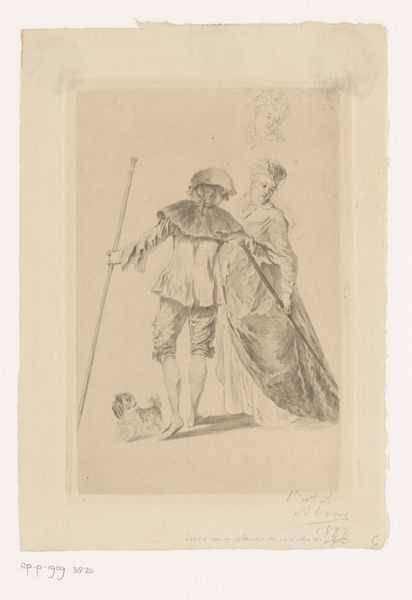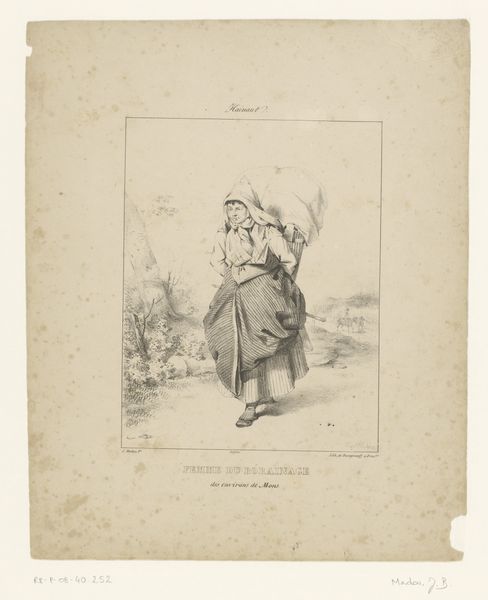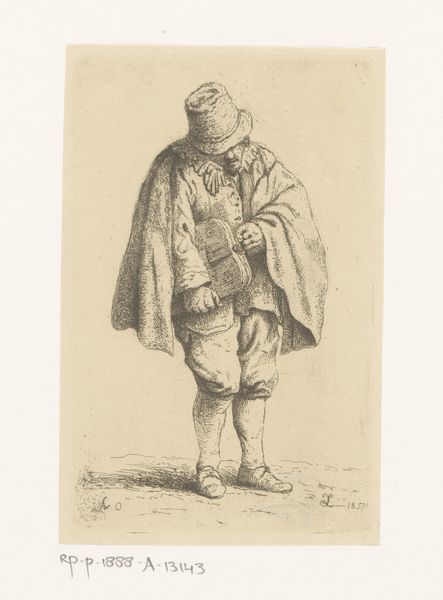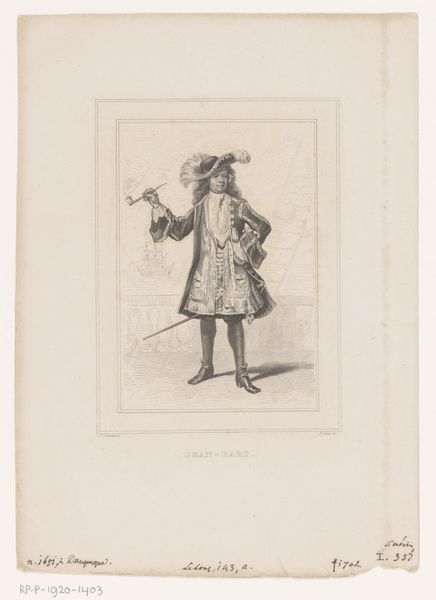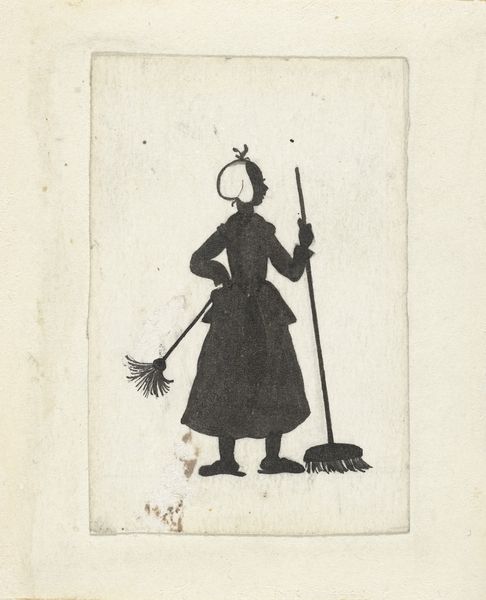
print, woodcut
# print
#
figuration
#
woodcut
#
orientalism
#
academic-art
Dimensions: 106 mm (height) x 116 mm (width) (bladmaal)
Editor: This is Axel Kittendorff’s "En Marokkaner," created in 1836, a woodcut print of a Moroccan man. There's a stillness to it, almost like a posed photograph, even though it's a print. The spear he carries makes me think of vigilance, but also perhaps of threat. What catches your eye? Curator: The spear is definitely a focal point. Not just for its implied violence, but what it means culturally. Consider the period – 1836. Orientalism was at its height. The spear, coupled with his attire, reinforces a specific Western understanding – perhaps misunderstanding – of North African identity. What sort of person do you think the artist envisioned when creating this? Editor: Someone… exotic? The title itself, "A Moroccan," feels like a generalization. Maybe someone strong, capable, even dangerous, going off the weapon he’s carrying. Do you think the artist saw him as an individual or more as a representation? Curator: Probably more of the latter. Remember, Orientalism wasn't about depicting reality; it was about creating an idealized, often romanticized, or even demonized version of the "East." Look at how the landscape behind him fades almost into abstraction. Is that truly about Morocco, or about an imagined space, culturally? Editor: So, even seemingly straightforward depictions like this one can carry a lot of cultural baggage. The image tells a story that might say more about the artist and his time than about the man he depicted. I will see things differently from now on! Curator: Exactly. Visual culture speaks in codes, in visual shorthands, often inherited unconsciously across generations, and now we may see its implications more clearly. Always remember to decode!
Comments
No comments
Be the first to comment and join the conversation on the ultimate creative platform.
